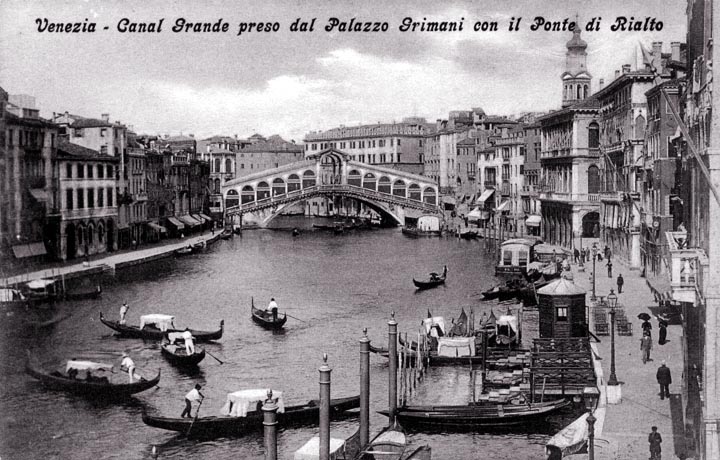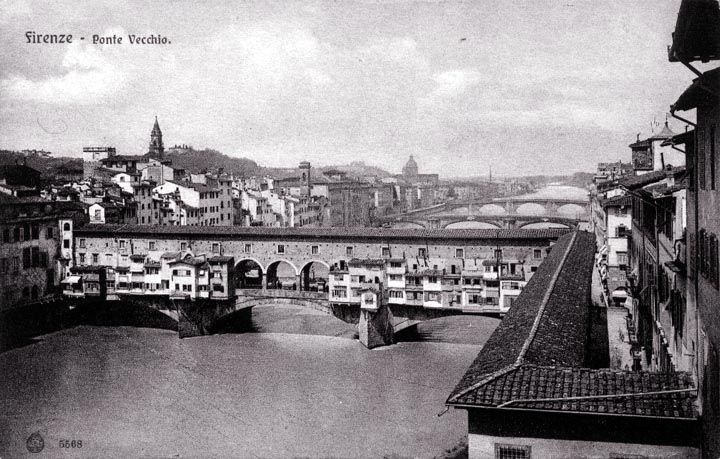
The Grand Canal is crossed by only three bridges. One of them is a rather makeshift wooden structure that will be replaced. . . someday. The bridge near the train station is a lovely arch but a rather simple structure. The Rialto Bridge is one of the great landmarks of Venice. The bridge is situated at a sharp bend in the canal and is a vital link between the two major halves of Venice. But it is more than a bridge. What I never realized until I saw the bridge in person was that all the small arches atop the bridge are actually the backs of many small shops that line the main walkway of the bridge. There are, I believe, nine "traghetti" crossing the canal. These are gondolas, somewhat larger than normal and rowed by two men, that shuttle across the canal between landings on either side. They are the only cheap way to take a gondola ride in Venice, and the last serious "working" gondolas - the rest are just for tourists. Venice might have built bridges at each of these locations, as there is a considerable volume of foot traffic that needs to cross at each of them. However, the city has never built these bridges, perhaps because of the expense, but probably also because the bridges would tend to block the long vistas down the Grand Canal. (It is worth noting that one of the other two bridges is also located at a sharp bend in the canal, where it does not block a long vista.)
The balustrades are of dolomite, a stone similar to marble. This stone has been polished smooth where people have leaned against it over the centuries. I think that structures that allow people to leave marks of their passage are a reassuring symbol of permanence in a changing world. One can scarcely help wondering about the countless others who have leaned against this stone and gazed out over it.
|
 Next City Design Home
E-mail |